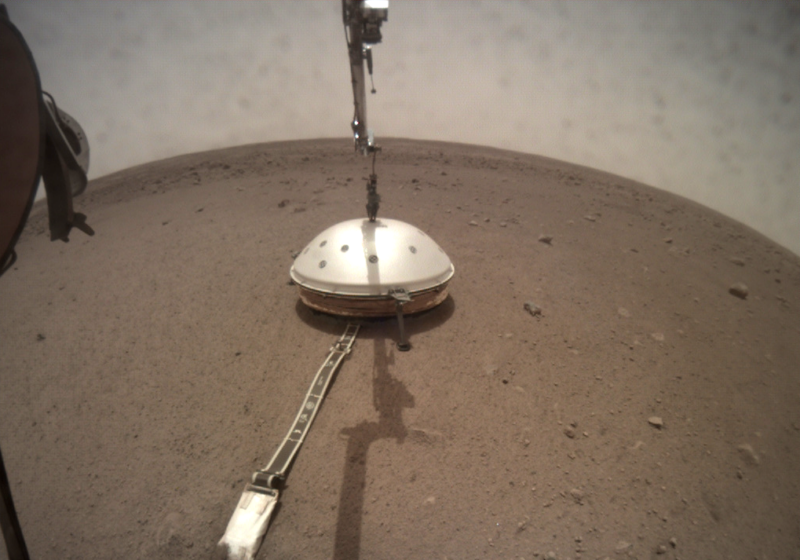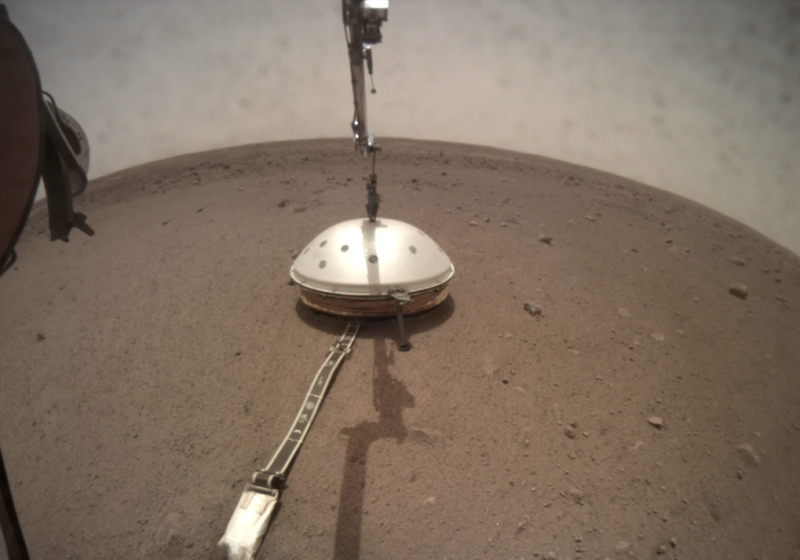
Enlarge / InSight places a wind shield over its seismometer. (credit: NASA/JPL-Caltech)
NASA’s InSight lander installed a seismograph on Mars, and the marsquakes it detected have helped us map the planet’s interior. This data provides the big picture of Mars’ internals—how big the core is, whether anything is molten, and so on. But it doesn’t capture the small details, like what the ground immediately below InSight looks like.
This week, researchers described how they’ve managed to find quiet periods on Mars that lets them image closer to the surface. The results, combined with some nearby surface features, reveal that InSight is likely above two large lava flows, separated by layers of sediment.
Be very quiet
Marsquakes aren’t useful for sorting out local features. If their seismic waves arrive from far enough away, then their behavior is mostly influenced by the materials they spent most of their time traveling through. If the marsquake happens nearby, then things are too energetic to make out the fine details caused by local features. So, in order to look at the local geology, you need to look at the background seismic noise that’s constantly being picked up by InSight.





